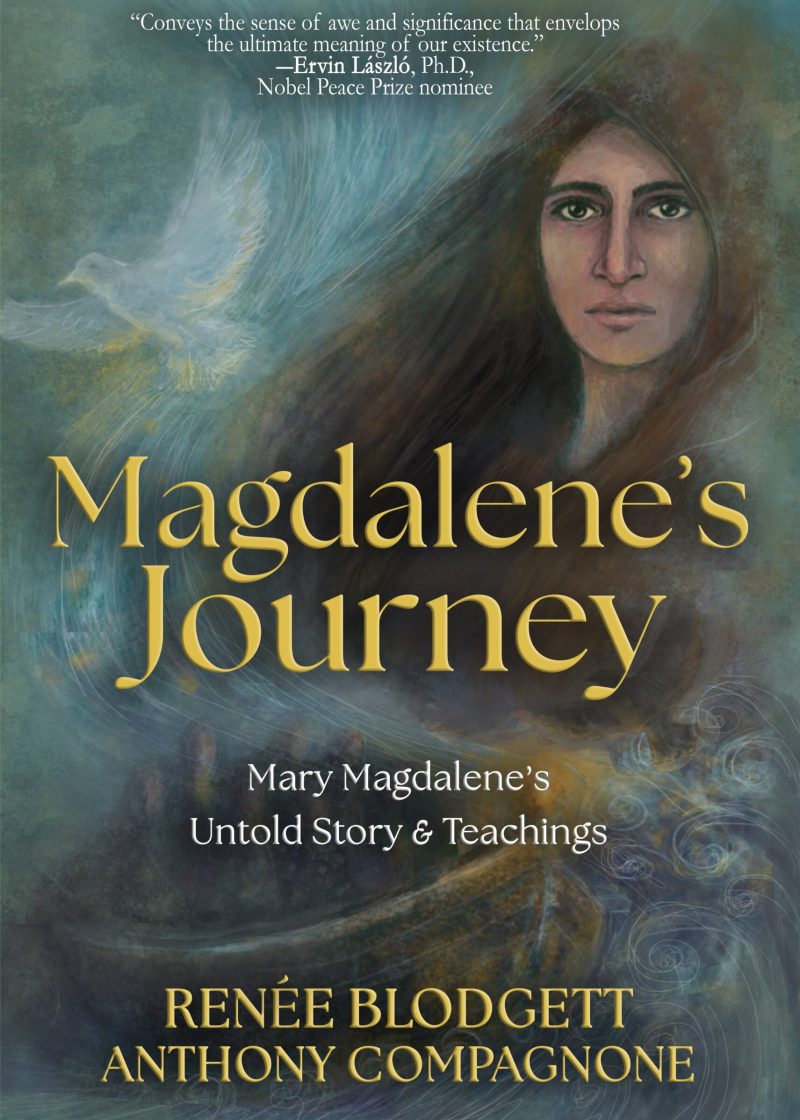
Magdalene’s Journey is the story of Cambridge-based Rochelle and Angelo, whose lives are turned upside down after they receive visitations from souls who once walked the earth over two thousand years ago.
Filled with deeply personal revelation and timely wisdom, this passionate, raw chronicle explores the life of Mary Magdalene, otherwise known as Miriam of Magdala, including her relationship with the apostles—both male and female— and her life with Yeshua (Jesus of Nazareth).
Magdelene’s Journey challenges a filtered and archaic narrative that has defined Abrahamic religions and women’s pivotal role in history. Her chronicle frees readers from the confines of a masculine view of who she was and how she has been portrayed across history. The book offers a modern enhancement to reality and also shares the need to rebalance the masculine and feminine energy in the world, starting within each one of us.
Her rich, bold, and emotional story pushes you beyond your comfort zone, prodding you to reconsider your definitions of imaginary, visionary, reality, and truth as well as re-examine history and answers to life’s most paradoxical questions about humanity’s very existence.
This mind-bending dialogue with two of the world’s most misunderstood spiritual masters presents an inner gnosis approach to understanding “Source” or God, based on Yeshua’s original teachings.
The reader receives astonishingly similar parallels between Miriam and Yeshua’s ancient wisdom to the Cosmos as explained by quantum physics. Through their teachings, Rochelle and Angelo begin to question the very nature of reality itself.
Awards & Accolades . . .
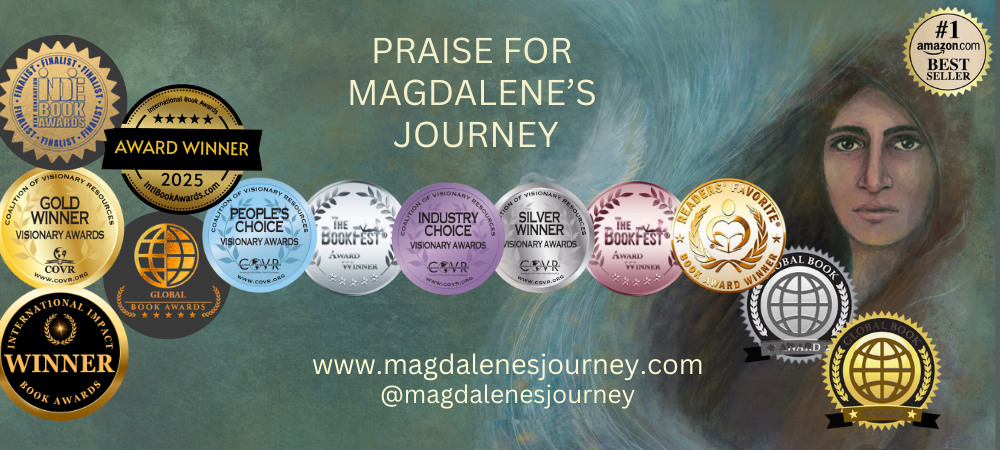
Have you ever wondered about the inspiring and resilient women who were left
out of history and holy books?

- Re-experience history from a pivotal woman’s perspective, one who has long been misunderstood and poorly misrepresented for millennia.
- Discover Mary Magdalene’s critical role alongside Yeshua (Jesus) and how archaic storylines dictated our belief systems about religion and history.
- Understand why the patriarchal agenda kept women’s voices out of historical headlines.
- Explore how new scientific findings point to secrets spiritual teachers, sages and masters have known for eons.
And most importantly, discover how to step into your
soul’s calling and live from your heart without
dogma, fear and other people’s agendas weighing you down.
What Visionaries Say . . .
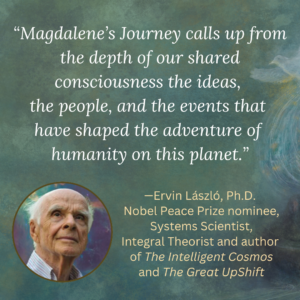

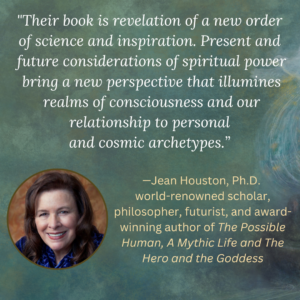
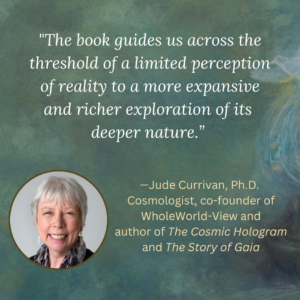
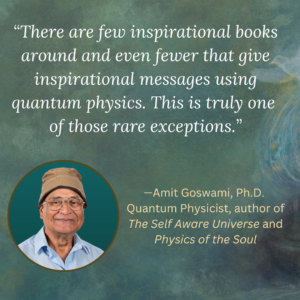

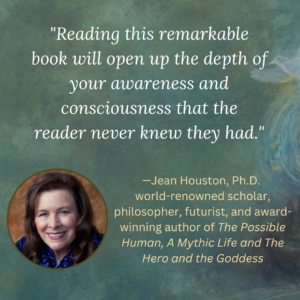
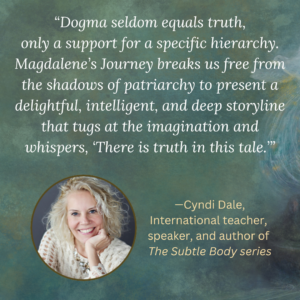

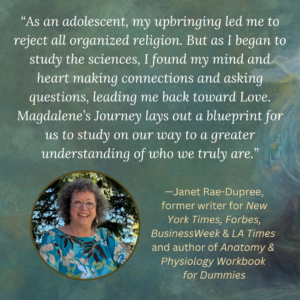

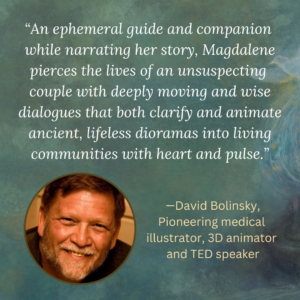
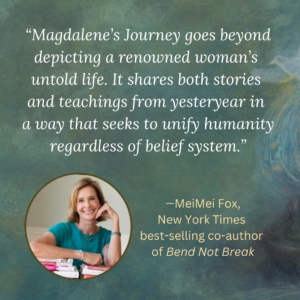
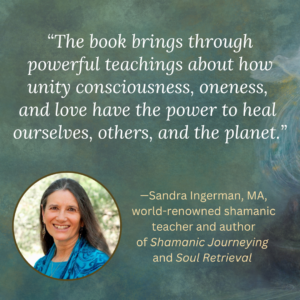
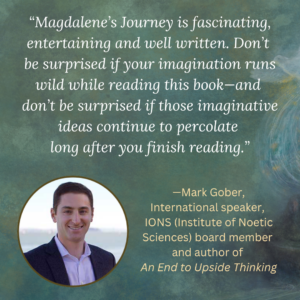
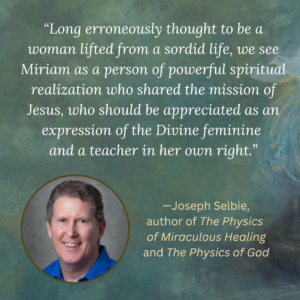
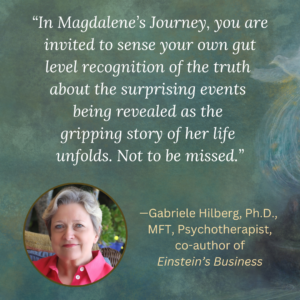
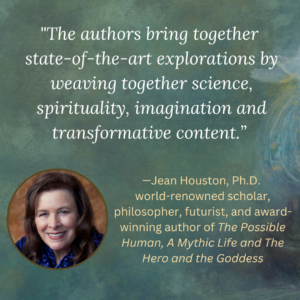

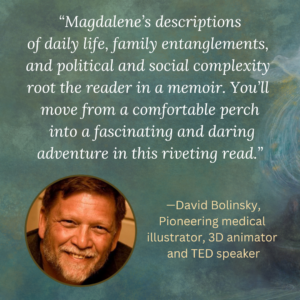
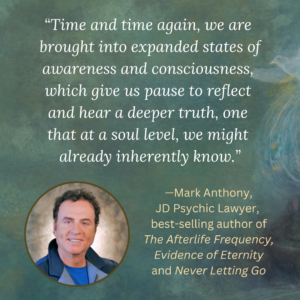



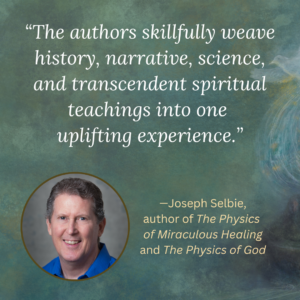
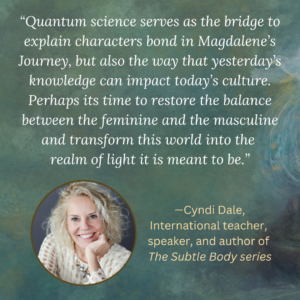
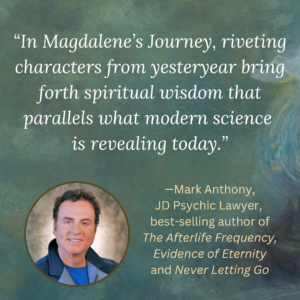
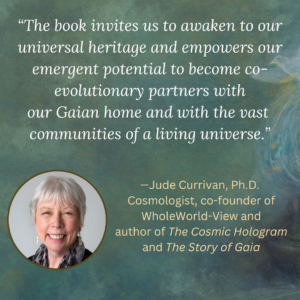

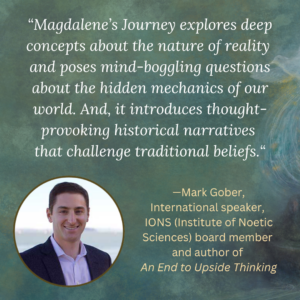
In addition to challenging history’s antiquated narrative, this riveting book tackles . . .
- How the teachings millennia ago bridge modern times.
- The multidimensional aspects of the soul.
- How to move beyond your comfort zone and into your true purpose.
- Choosing love over fear and watching your dreams unfold.
- Why re-balancing the masculine & feminine within is a pathway to love.
As Shown On . . .



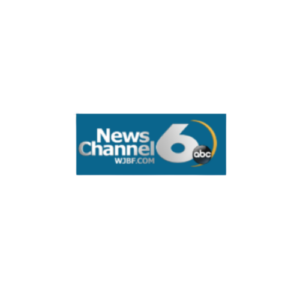
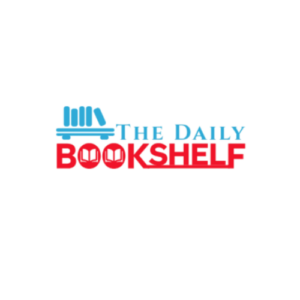


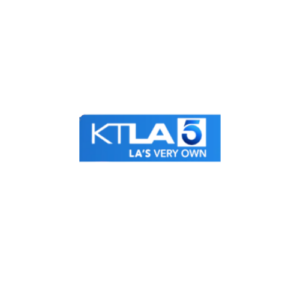
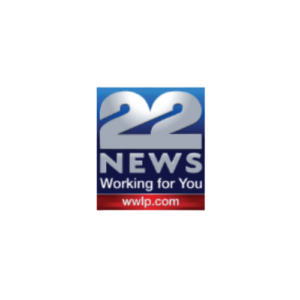

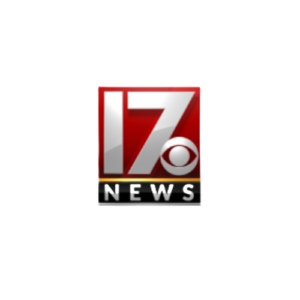
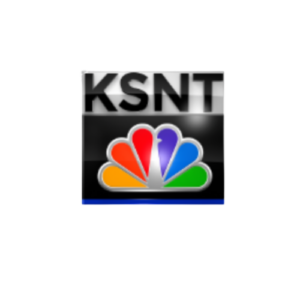

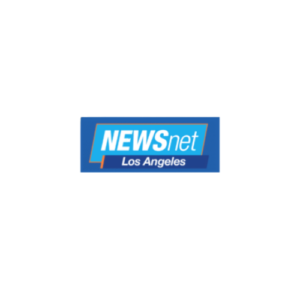
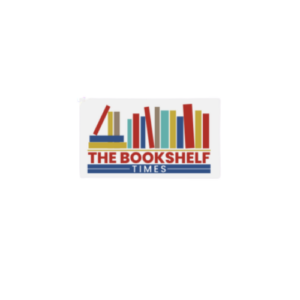















Magdalene Around the World . . .
About the Authors
Authors Renee Blodgett and Anthony Compagnone are the founders of Blue Soul Earth® where they focus on raising humanity’s awareness and consciousness through courses, workshops, membership programs, and retreats. Their work is designed for those interested in going inward and exploring the soul’s journey, as well as the nature of humanity and reality. The teachings combine gnostic and ancient spiritual wisdom with modern science.
With a foundation in heart-centered living, they ignite the human potential, helping others transform by tapping into their own innate wisdom, so people can lead with purpose and connection.
Magdalene’s Journey is their first book together.

Sign up for our newsletter...
Events | Book Tours & Signings | Retreats | New Book Releases | Online Gatherings | Guided Meditations
By submitting this form, you are consenting to receive marketing emails from: Magdalene. You can revoke your consent to receive emails at any time by using the SafeUnsubscribe® link, found at the bottom of every email. Emails are serviced by Constant Contact
What Readers Say . . .
Magdalene’s Journey tackles long-held stigmas around sexuality, urging readers to examine and release these constraints. We are invited into an awakening of human connection as a pathway to love, creativity, and divine expression, reminding us of the miracles that can be found in everyday exchanges. The book intertwines experience, divine insight and inspiration to seek harmony in our lives.
The book invites readers on a transformative journey to rediscover the balance of masculine and feminine energies within themselves and the world, shedding light on universal themes of love, resilience, and spiritual awakening. Their meticulous approach integrates historical exploration with philosophical depth, drawing on reflections from notable scholars and futurists.
A profound read, it made me wonder how many other important women were left out of history. Integral to the book is the teaching that real peace and a sense of purpose lie within. When we learn that we no longer need to chase truth from external sources, we realize that the beauty and innate wisdom are within us, and we are the true gurus we seek ‘out there.
Magdalene’s Journey offers a powerful framework for healing and transformation with important messages about the importance of nature, our interconnectedness with the earth and every living thing around us. Humanity’s evolution requires a shift in perception—one that embraces love, unity, and a deeper relationship with all living things on the planet.
The book’s fluid and graceful storytelling resonated as truth, unlike many Bible stories that were dictated to me throughout twelve years of parochial school. It repeatedly brought ‘aha moments’ of insight and discovery, serving as a poignant reminder of the misinformation and dogma that humanity has received over the millennia.
This wonderful book shows how history has diminished Magdalene’s role and contributions to spiritual healing and teaching. The book takes readers on a journey through time, weaving the Goddess’s history and modern fantasy elements into a tale that transcends religious boundaries, prompting readers to reflect on universal spiritual principles and their application to contemporary life.
This book confronts the skewed narratives surrounding Magdalene’s role in religious history, illuminating a tale relegated to the shadows of theological debate. The story is a necessary reclamation of her power and wisdom following centuries of patriarchal dominance and a call to reawaken a feminine spirituality long hidden beneath layers of distortion.
Magdalene’s Journey delves into the often-overlooked spiritual and historical dimensions of Gnosticism, shedding new light on its significance in early Christian thought and Magdalene’s role beyond traditional biblical narratives.” They combine historical research with spiritual analysis, presenting scholarly views and more speculative interpretations, leaving room for others to draw their own conclusions.
This is an essential read for anyone who has taken the Bible literally or forgotten that even sacred texts are used for mass manipulation and power grabs. It speaks of patriarchal half-truths that have trapped Western Society for over 2,000 years. Exploring a new idea can be as easy as trying it out, just as driving a car is without needing to know how the engine works. Give these ideas a try.
Historical fiction meets a reimagined perspective of Magdalene’s relationships and teachings. It reviews the often-overlooked roles of women in history and how their stories have been shaped—or erased—over time, inviting us to reconsider our understanding of faith, love, and the balance of feminine and masculine energies. Deeply researched and profoundly moving.
A tour de force of literature that moved me much like Beaudelaire’s Les Fleurs Du Mal and Homer's Odyssey did. The Catholic Church can no longer hide the significant roles of women. Behind every great man is a woman of greater strength, knowledge, determination, power and confidence. Bravissimo to the authors for allowing Miriam to boldly go where few women have gone before.
The authors bring us a book like no other, offering guidance on understanding the paradigm shifts we are birthing in our world. Magdala's earthy and sublime presence delivers feminine energy, grace, and power. Supporting humanity’s oneness, it weaves mystical experiences with modern quantum science, past and present wisdom teachings from various traditions and cultures.
Magdalene’s Journey offers a deep exploration of women's inner struggles as they navigate the tension between their sensual and spiritual selves. Her odyssey is one of self-discovery with the deep-seated shame ingrained in women’s psyches for centuries. It serves as a mirror of how society, culture, and religion have conditioned women to deny and suppress their sensuality and sexual power.
The book offers a fresh perspective on the timeless quest for understanding humanity and our place in the universe. It incorporates what we know of quantum mechanics and how it informs us that there is more to reality than what our material senses tell us. It is an inspiring story of how we are all connected across multiple planets and even multiple universes.
Magdalene’s Journey makes you wonder about the extent of our abilities when we surrender to something beyond ourselves and refrain from always trying to control our outcome. It draws upon and integrates core teachings that all great masters across cultures have taught, emphasizing our interconnection, the illusion of separation, and our role as creators and co-creators of our realities.
Magdalene's Sisters™ Membership Program
Magdalene’s Sisters™ is a monthly membership program that is designed for women from across all cultures, belief systems and parts of the world. We gather online to connect, share and uplift each other so we can all be empowered to step into our true light, our purpose and speak our truth.
As part of the membership, experience guided meditations, teachings of the gnostic wisdom and how it applies to our modern lives, sharing, community and the ability to ask questions.

Historical Fiction Meets Visionary Literature
Truth be told, we—Renee and Anthony—knew nothing about Mary Magdalene beyond name recognition. Despite our many spiritual experiences over the years, we both ran from institutional dogma at an early age. The traditional rules and restrictions approach to God has never resonated with either one of us and because the references to Miriam of Magdala and Jesus of Nazareth often occurred in a traditional religious context, they weren’t on our radar.
You might say that Miriam and Yeshua found us. Deeply rooted in simple but profound teachings, the combination of Yeshua’s wisdom and Miriam’s life story got under our skin. More importantly, it made its way into our hearts.
As a renowned jazz artist friend once said to us, “We are all connected to the universe. We have access to all of it; most people just don’t realize it.” This work gave us the experience of that connection, and reading the book allows you to share that connection as well.
Her journey took the shape of declarations about her life with Yeshua and the apostles, statements that challenge a much filtered and archaic narrative that has dictated to humanity how to understand history and the Abrahamic religions.
It didn’t take long for us to discover a growing curiosity about this mysterious woman who was referred to by different names: Miriam of Magdala, Mariam, Mary Magdalene, the Tower, Madeleine, or simply the Magdalene. Tossed aside like an inconvenient truth by the powers behind patriarchal Roman thrones and later the male-controlled Catholic hierarchy, she has mostly been unknown. People who took the time to probe deeper still looked through that tainted lens, leading them to misunderstand and devalue her role as a healer and teacher. That role, one could argue, was equal to that of Yeshua’s as the yin to his yang―complementary and interconnected forces that together deepened the power of their healing abilities.
When Magdalene’s Journey talks about Biblical texts, it is to suggest that omitting or changing Yeshua’s original teachings in these texts served Roman and later Catholic Church power structures. First and foremost, Yeshua taught about love and that the kingdom lies within, teachings that are echoed throughout the book.
Layered throughout the book are Yeshua’s true teachings in the way that we have come to understand them through our own research, interpretations, and personal experiences.
Although the material has not been validated by historians or academics, sections in the book point to historical accounts and places as well as to some of the research about her.
Countless questions about Miriam of Magdala remain unanswered and many gaps persist, pointing to a larger, unacknowledged question: How many powerful and pivotal women have been written out of history and holy books? Even for scholars and historians who have investigated this period in time, there’s much that they still don’t know.
As Historical Fiction, you might say that it combines history and mystery. As such, it also befits Visionary Literature—refer to the answers related to both book categories in the FAQ.
This story about Mary Magdalene counters the patriarchal powers that misshaped her life for far too long. You won’t find religious dogma in this story nor in Yeshua’s teachings which are woven into Magdalene’s narrative like an exquisite and treasured tapestry from yesteryear.
We have combined elements of history, the visionary, and our personal experiences into the book. To the extent that Magdalene’s Journey can be called Historical Fiction, it most resembles two subtypes: biographical historical fiction and alternative history. It is biographical as the story of Mary Magdalene’s and Yeshua’s lives, and it is alternative in that her story challenges religious and scientific orthodoxy and their mainstream paradigms of reality.
Consider how James Redfield’s The Celestine Prophecy and Tolkien’s The Hobbit mix familiar elements of reality or history to draw the reader into a world of magic and mystery with their surreal underpinnings. Similarly, Magdalene’s Journey is designed to entice you into a world of historical enchantment from yesteryear that feels familiar and comfortable at times and far-reaching, ethereal, and otherworldly at others. The series Outlander also blends fantasy and historical reality although it remains grounded in actual locations, as does Magdalene’s Journey.
Although you can easily dismiss any truth from other books that fall into the realm of historical fiction, films, or TV series, they all raise serious questions: Where did they get their ideas from? Was it a vision, a dream, or a daytime imaginary stroke of brilliance? Does one life possibility exist instead of the other, or do the two proposed lives exist in parallel dimensions happening simultaneously? Can our consciousness access both in ways that cannot be dismissed as mere imagination or make-believe? Perhaps most important of all, can imagination be a pathway to higher realities?
We present these questions because you may find yourself asking similar ones when you read through the mix of the comfortably realistic and the seemingly awe-inspiring in Magdalene’s Journey.
Whatever terms you choose, you might begin to question whether Miriam’s account of her time with Yeshua and her life after his death is real or imagined. This post-modern question is at the heart of the book, upending categories of fact and imagined realities. Miriam certainly claims a higher truth to her journey.
On the flip side, unlike most non-fiction, this work postulates as truth that more than one truth exists and that reality depends on perception rather than a purely external, provable claim. And while some may decide such a message makes this book a work of the imagination, it resonates with the implications of quantum physics as well, some of which are shared in the book.
Besides historical fiction, the genre that fits Magdalene’s Journey well is Visionary Literature. Within this genre live the labels of New Age, Mind and Body, and Mysticism. Depending on whom you ask or where you unearth your definition of this lesser-known genre of Visionary Literature, you’ll find a whole host of descriptions and informally related categories, which include consciousness and spirituality but also those further afield like parapsychology. A key feature of the content is the “expansion of the human mind” or “growth in consciousness.” An overview of the genre from the Visionary Literature Alliance (accessed April 4, 2023) suggests the following:
Visionary Fiction embraces spiritual and esoteric wisdom, often from ancient sources, and makes it relevant to our modern life. Gems of this spiritual wisdom are brought forth in story form so that readers can experience the wisdom from within themselves.
Two other key features mentioned on the same site are a plot that is “universal in worldview and scope” and a story that may use “reincarnation, dreams, visions, paranormal events, psychic abilities, and other metaphysical plot devices.
While this understanding of the genre is fairly recent, visionary art is far from a new term. In his essay, “Psychology and Literature,” Carl Jung (1875-1961) divided art into the psychological and the visionary; the former connects to realism and conscious, individual experiences while the latter emerges from what we might deem the imagination or collective unconscious and something that feels unfamiliar. Examples Jung deems visionary include Dante’s The Divine Comedy and Goethe’s Faust. Dante’s early fourteenth-century epic poem, The Divine Comedy, features a spiritual journey, using Virgil as a guide for Dante to pilgrim through hell and purgatory.
Although Jung did not categorize Blake as visionary, Blake has often been called visionary because of the visions and prophecies he expressed in poetry, some prose, and some etched images. Going further back, we can look to Virgil (70 BCE), the ancient Roman poet from the Augustan Period, known for The Aeneid, a visionary epic depicting relations with the gods.
If we rewind the clock even further, the legendary poet Homer comes to mind. Regarded as the author of two great classical works foundational to Greek and by extension to all Western literature: The Odyssey and The Iliad. Both are seen as epic poetry, some of whose features overlap with the visionary. Both portray journeys—Achilles’ metaphorical journey of the hero in The Iliad and Odysseus’ journey as the core plot; contain dreams and divine intervention; and illustrate growth in wisdom applicable to all humans, such as persistence and trust in one’s instincts. At the same time, they overlap with historical fiction in that they include the Trojan War. In the context of visionary literature as a modern book genre, The Alchemist by Paulo Coelho could be seen as a defining example; it shares with other visionary writers the use of a journey in his allegorical fable of spiritual growth and enlightenment.
Together, these examples—old and new—demonstrate that although visionary literature is often equated with content that is religious in nature, this equation is not always the case. Instead, it can be quite broad, just as the loosely related genre of metaphysical literature has come to be broad in nature. Samuel Johnson first coined the term metaphysical poetry to describe certain seventeenth-century English poets who relied on science and other intellectual knowledge to express emotional, moral, and religious matters, but today metaphysical literature has taken on a different meaning; it includes not only poetry but also may use knowledge related to the supernatural, Gnostic, and transcendent.
As visionary literature, Magdalene’s Journey offers a consciousness-expanding narrative about the life of Miriam of Magdala and about the nature of reality she and Yeshua want us to understand. It contains “spiritual and esoteric wisdom, often from ancient sources, and makes it relevant to our modern life.” It is “universal in worldview and scope.” And it uses what may seem to be “paranormal events” and the metaphysical plot device of timeline jumps. All of these aspects of visionary literature help build historical fiction’s alternative story that challenges religious and scientific orthodoxy and their mainstream paradigms of reality.
Buttressing the plausibility of the alternating ancient and modern storylines in Magdalene’s Journey are scientific explanations of the surreal exchanges. The jumps in timelines and other seemingly fantastic phenomena often require quantum science in particular although we, as the authors, never proclaim a fully accurate understanding of quantum realities.
Over the past twenty years, countless books have probed deeper to attempt to explain new scientific discoveries and their relationship to God, spirituality, and consciousness. While some scientists and philosophers debate the validity of new findings, or at least their practical applications in our daily lives, we have come to realize that there may be things happening we can’t yet fully understand, including within the void and dark matter that our human eyes can’t see.
As science makes more discoveries and unravels more quantum mysteries, it seems likely that humanity will better understand the complex, mind-bending ways the universe works, particularly how the energies within it exist in a nonlinear, nonlocal dimension. In essence, reality is a beautiful dance between the local and nonlocal world, between local consciousness and nonlocal consciousness and everything contained within the truly omnipresent All That Is.
We’ve come a long way in the last century. Although relativity and string theory are not yet everyday twenty-first-century dinner conversations, they have indeed entered our awareness. Within this expanded awareness exist unlimited possibilities and probabilities or paths we can take.
We now realize that every action has an impact elsewhere, which some refer to as cause-and-effect. We know now that the universe is more connected than we realize, an idea that has expanded substantially since Schrödinger first coined entanglement. While this idea is far from new, understanding various complex interactions, effects, and entanglements in many spheres from everyday reality to subatomic dynamics is continuing to grow. It truly is an interconnected and participatory universe, even if we’ve yet to fully comprehend it.
The butterfly effect suggests that one small change in one state can change a state somewhere else in the world. The concept has been extended to other situations in which small changes can lead to larger consequences, even in the cosmos itself. An even more complex idea of the cosmos, the multiple worlds theory, implies that there are an infinite number of universes and that perhaps we’re even folded into or part of other universes we simply can’t see. In other words, this ripple effect is much more profound than we can grasp with our linear minds. Stephen Hawking once said, “The universe, according to quantum physics, has no single past or history. The fact that the past takes no definite form means that observations you make on a system in the present affect its past.”
Perhaps we’re only seeing the tip of the iceberg of what David Bohm, Einstein, Schrödinger, and other forward-looking and cutting-edge thinkers have uncovered. To the dismay of some, several of the newfound truths looked more like metaphysics than traditional science. A small number of courageous and bold visionaries have been shot down for suggesting an interrelationship between the metaphysical and the physical worlds. Materialists have tried to cement a separation between the two, but more and more have been brave enough to step forward and speak their challenging and controversial truth.
These emerging answers to profound questions remain tentative because they have been beyond what we can prove with physical evidence, whether by direct observation or by consistent scientific measurement. Recently, however, Western science has made progress in proving quantum dynamics; moving from theory to evidence, three scientists from three different countries received the 2022 Nobel prize in physics for developing tools to identify particle entanglement in particles normally considered too far apart to affect each other.
Miriam’s narrative offers a glimpse into the world of interconnected multidimensionality, a concept that closes a gap that has long divided mystics, spiritualists, and philosophers on one side and materialists, scientists, and physicists on the other. It also brings you into the world of nonlocal consciousness beyond the observable physical world where Newtonian laws apply.
The New Testament book of Luke mentions that Yeshua had female followers; however, it only says they are called disciples while the twelve apostles Yeshua chose were all men. Luke also notes that these women financially supported Yeshua’s teaching. Three specific well-off women are named: Mary Magdalene, Joanna, the wife of Herod Antipas’ household manager, and Susanna, about whom little is known. Yeshua is said to have healed all three. Although Luke mentions the existence of many other female followers, nothing more is said about them. In later years, other women who served with people such as Paul are also mentioned in the Book of Acts.
As Magdalene’s Journey reveals, it took extra courage for women to leave their families to follow Yeshua and teach. Readers learn more about women who are clearly not only disciples but apostles. This fact alone stands as a correction to a patriarchal narrative about Yeshua’s female followers. In Miriam’s account, female apostles continue to work with Miriam after Yeshua’s Resurrection. It is perhaps interesting that none of these women are Joanna or Susanna, yet this should not downplay the importance of those women who committed their lives to Yeshua’s teachings and healings and who the male-dominated powers of the time ignored or devalued.
According to religion scholar Mary Anne Beavis in her paper “Reconsidering Mary of Bethany,” it appears that Miriam of Magdala and Mary of Bethany were identified as one by early Christians. Yet Beavis also suggests that the Orthodox Church saw Miriam of Magdala and Mary of Bethany as two different women. Later, Beavis continues, in 591 C.E., Pope Gregory added the identity of a prostitute to Miriam, an identity which continued for centuries in Western Christianity.
According to an article by Mary Ann Beavis from The Center for Christian Ethics at Baylor University:
“The legend of Mary Magdalene, the sister of Martha and Lazarus, as a beautiful, vain, and lustful young woman saved from a life of sin by her devotion to Jesus became dominant in Western (Catholic) Christianity, although the Eastern (Orthodox) church continued to regard Mary Magdalene and Mary of Bethany as distinct saints, and identified neither with Luke’s sinner.”
As is well known, Pope Paul VI uncoupled all three women in 1969. But Beavis notes, “the Gnostic texts may have conflated them.” In other words, the Mary (Miriam) of the Gnostic Gospel of Mary either combines the two, identifies the two as one, or creates a composite.
Duke University scholar Elizabeth Schrader observed some changes made to a 12th-century Greek manuscript in Duke’s library that blurred the lines between Mary and Martha. It appeared that names were altered in Papyrus 66, thought to be the “oldest near-complete manuscript of the Gospel of John.” Schrader believes this was done to “distort the Gospel of John’s presentation of Mary Magdalene. If Lazarus’s sister Mary is Mary Magdalene, then she becomes a far more authoritative figure in the Gospel of John. However, once Martha is added to this story, Lazarus’ sister Mary isn’t Mary Magdalene anymore—instead she’s a different Mary from a different gospel (Martha’s sister from Luke 10).”
Given that there are other accounts and suggestions, even from scholars, that Christian texts have downplayed Mary Magdalene’s prominence and role, it is highly likely that her strength and courage for that time in history meddled with patriarchal thrones and power. Even art across centuries has depicted Mary Magdalene’s demeanor as weak and yielding to Jesus rather than the strong female apostle that she likely was, teaching and healing alongside him prior to his death.
As Magdalene’s Journey reveals, it took extra courage for women to leave their families to follow Yeshua and teach. Readers learn more about women who are clearly not only disciples but apostles. This fact alone stands as a correction to a patriarchal narrative about Yeshua’s female followers.
In Miriam’s account, female apostles continue to work with Miriam after Yeshua’s Resurrection. It is perhaps interesting that none of these women are Joanna or Susanna, yet this should not downplay the importance of those women who committed their lives to Yeshua’s teachings and healings and who the male-dominated powers of the time ignored or devalued.
Miriam’s narrative offers a glimpse into the world of interconnected multidimensionality, a concept that closes a gap that has long divided mystics, spiritualists, and philosophers on one side and materialists, scientists, and physicists on the other. It also brings you into the world of non-local consciousness beyond the observable physical world where Newtonian laws apply.
If we accept the assertion that consciousness is ubiquitous and forever emerging, it would seem that we can access it at all times. Knowing that we are connected to the Universal Consciousness of All That Is which includes non-locality, it doesn’t seem like such a far stretch to claim knowledge beyond our individual, ego consciousness. In her book, The Cosmic Hologram: In-formation at the Center of Creation, cosmologist Jude Currivan explains it in this way:
By understanding that all that we call reality, not only on the physical plane but also beyond, is consciousness exploring and experiencing itself on myriad levels, the cosmic hologram offers an all-encompassing model of the Cosmos. . . . [E]xperiences of non-local awareness that are capable of transcending space-time, while nonetheless extraordinary, should come to be seen as innate abilities.
The idea of non-local consciousness is central to understanding the source of stories that are passed from Miriam, Yeshua, Lazarus, the Essenes, and Elohim to the two main characters of the book, Rochelle and Angelo. Also critical is the means to accessing this non-local consciousness.
In Magdalene’s Journey, Miriam shares with Rochelle that one example of accessing non-local consciousness or whatever term you wish to use, is channeling. On a couple of occasions, Miriam explains to Rochelle that one of the female apostles channeled Yeshua, bringing his energy and words into her auric field. Of course, they obviously didn’t call it channeling during their time, but Miriam chooses modern terminology as a way to explain and connect what was happening then with what is happening now through Angelo and Rochelle, experiences that we have shared in the book.
Besides channeling, other practices gaining acceptance today explain how human beings can access expanded awareness and consciousness, including non-local information. These include shamanic journeying, psychedelic experiences, meditation, Kundalini yoga, and soft martial arts, amongst a host of other examples. Many have ancient roots. As Miriam reminds Rochelle in the book, “age-old sages, indigenous elders, and spiritual masters have been able to bilocate and access subtle realms and dimensions for eons.”
In the modern world, Helané Wahbeh’s research, published as The Science of Channeling, evinces greater public acceptance of channeling. Her premise is that “all humans can channel. That everyone can reveal information and energy from beyond time and space.”
Yet for some, the word still invites ridicule or conjures a certain unseemliness, giving rise to skewed labels and biases; some even stigmatize it as energies or outside “forces” taking over the human body. Perhaps these negative connotations, especially the idea of possession, reveal perceptions based on superstition and fear, drilled into us through traditional religion for so long that most people avoid the term—at least publicly—so as to avoid dismissive judgment by the masses and the media.
Reframing channeling without fear and in the context of Magdalene’s Journey, we suggest it can be thought of as the ability to access a creative databank in the non-local “cloud” as well as trustworthy inner guidance that everyone can access whenever they choose. The language you choose to describe such an experience is entirely up to you.
Consider fantasy authors like J.R.R. Tolkien (notably The Hobbit and The Lord of the Rings) and science fiction producers like George Lucas (Star Wars and Indiana Jones, amongst others); neither Tolkien nor Lucas call their work channeled stories or non-fiction. Conceivably their award-winning masterpieces are a combination of their vivid imaginations, dreams, and intuitive minds. However, our perception of what we each experience through those masterpieces may well place the stories in a realm beyond our everyday world. We are all co-creators of any work we read or experience through our various senses. Put another way, what we give energy to ultimately breeds life; it becomes a living entity in its own right, part of and yet also beyond the creator and reader or audience.
Did Beethoven, Einstein, and Van Gogh channel their creations? Some would argue that they did, whereas others would simply call it imagination or “genius.” The inner experiences of all of these creators may have been more alike than we know. What we can glean about how an author sees her creation lies in the perspective and language he is comfortable using to describe the experience of that creation, whether it’s a book, play, opera, film, or colors thrown on a canvas. The language or label of any creation process dictates where it lives in humanity’s collective consciousness.
Throughout the story, the characters Rochelle and Angelo question how their consciousness can expand to such a degree that information outside their “known” understanding can be relayed to them. They ask themselves: “Are we traveling through a portal to access knowledge from two thousand years ago? Are Miriam and Yeshua traveling through a portal to speak to us?” They eventually deduce that we are all portals of knowledge or consciousness―always connected to each other―something we as authors have also concluded.
The riveting narrative woven together inside Magdalene’s Journey brings old and new worlds together. It is designed to lead you down a path of discovery, encouraging you to ask deeper questions about the nature of reality itself and the highest spiritual wisdom.


